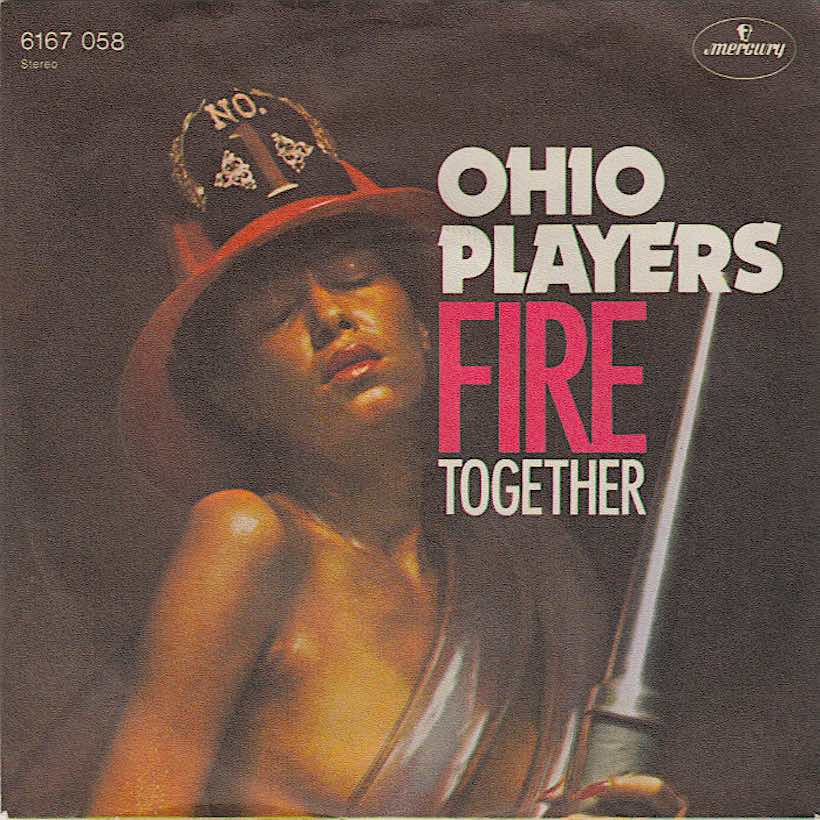In The Number Ones, I'm reviewing every single #1 single in the history of the Billboard Hot 100, starting with the chart's beginning, in 1958, and working my way up into the present.
Ohio Players - "Fire"
HIT #1:February 8, 1975
STAYED AT #1: 1 week
The first few #1 hits of 1975 were so overwhelmingly bland and narcotized and nostalgia-driven that it's amazing, in retrospect, that something as loud and rude and noisy as the Ohio Players' "Fire" was able to break through. "Fire" is literally noisy; it opens with the roar-whine of a fire engine's siren, something that has probably caused at least a few thousand radio-listening commuters to instinctively jerk their cars over to the sides of the road over the decades. There's nothing remotely mellow about "Fire." There's barely any melody, even. Instead, it's a horny and unrelenting vamp, a funk attack of towering proportions. As someone who has to write this column everyday, all I can say is: Thank God "Fire" exists.
'70s funk, like '70s hard rock, did not do well on the pop charts. A few funk bands -- Kool & The Gang, Earth, Wind & Fire -- will end up in this space eventually, but generally not with their sweatiest, nastiest efforts. The Commodores had a couple of #1 hits, but they had to stop making funk and become balladeers to do it. ("Brick House," the Commodores' definitive funk song, peaked at #5 in 1977. It's a 9.) But the bigger funk bands weren't so lucky. George Clinton's twin projects Parliament and Funkadelic never even made it into the top 10. (Parliament's highest-charting single was 1976's "Tear the Roof Off The Sucker (Give Up The Funk)," which peaked at #15, while Funkadelic only made it up to #28 with 1978's "One Nation Under A Groove.") Charles Wright's Watts 103rd Street Rhythm Band made it as high as #11 with 1968's "Do Your Thing." War's The World Is A Ghetto was the best-selling album in America in 1972, but the band's highest-charting single, 1972's "The Cisco Kid," only made it to #2. (It's an 8.) And even James Brown, the man who basically invented the genre, peaked at #3 with 1965's "I Got You (I Feel Good)." (It's a 9.)
So the biggest funk bands toured arenas and sold vast numbers of albums, but by and large, they were too raw for the radio, and their singles didn't chart as high as they probably should've. That was also the case with hard rock. The two genres were divided by race, but I imagine that a great many of the kids getting stoned at Led Zeppelin shows were also getting stoned at War shows. (Plenty of great funk songs, like Funkadelic's "Maggot Brain," were also great hard rock songs, and plenty of great hard rock songs, like the Spencer Davis Group's "I'm A Man," were also great funk songs, but that's a topic for another day.) So the Ohio Players were the exceptions. Like their fellow Midwesterners in Grand Funk Railroad -- who, I should probably point out, were not a funk band even if they had "funk" in their name -- the Ohio Players defied the odds and topped the Hot 100 twice while still making a whole lot of noise. Literal noise, in the Ohio Players' case.
It took time. The Ohio Players came together in 1959, 15 years before they hit #1. They were a Dayton band, and in the beginning, they were the Ohio Untouchables. Early on, the mostly worked as the backing band for the Falcons, a vocal group that, at various points, included singers like Wilson Pickett and Eddie Floyd. Eventually, the Untouchables broke out on their own, changed their name, and went through a bunch of lineup changes. (For a while, future P-Funk linchpin Junie Morrison was their keyboardist.) They found work as a house band for New York's Compass label. And finally, they figured out their own identity and started making hits.
The Ohio Players had an image, which is not a bad thing. The image worked. Their album covers were nakedly sexualized photos of women. And their songs were breathless workouts that were unafraid to get silly. The singer and guitarist Leroy "Sugarfoot" Bonner, who came to the band late but who took over as frontman, wasn't exactly a singer. He did as much howling and ad-libbing as he did singing, and he did it in a pinched, nasal whine, almost a parody of Stevie Wonder's voice. The band made it into the top 20 with 1973's "Funky Worm" and with 1974's "Skin Tight," two hard-stepping workouts that sacrificed all traditional songcraft in service of titanic hammerhead grooves. And then came "Fire."
If anything, "Fire" is even more uncompromising than the hits that had come before. Like a lot of Ohio Players songs, it's a song about being so breathlessly horny that you can barely handle yourself: "Well, I can tell by your game, you're gonna start a flame in my heart, baby." Bonner interrupts his own lines by breaking into giggles, and the rest of the band backs him up with vaguely tribal chants. On the molten break, Bonner knocks out some heavy rock riffage while congas and timbales explode all around. But the whole song is built around two things -- the overwhelmingly nasty bassline and the way the whole band yells the title: "Fiiiii-yuhh!" It's glorious.
"Fire" hit #1 at the dawn of the disco age, and yet it's not a disco song at all. You could definitely dance to it, and it probably got club play, but it's a whole different sort of groove. It's a grimy, sweaty beast of a song. And in the context of the otherwise-antiseptic early-1975 pop charts, I can only just imagine how exciting it must've sounded.
GRADE: 8/10
BONUS BEATS: Since 2005, "Fire" has the opening theme of the Fox reality show Hell's Kitchen. Here's what that looks like:






